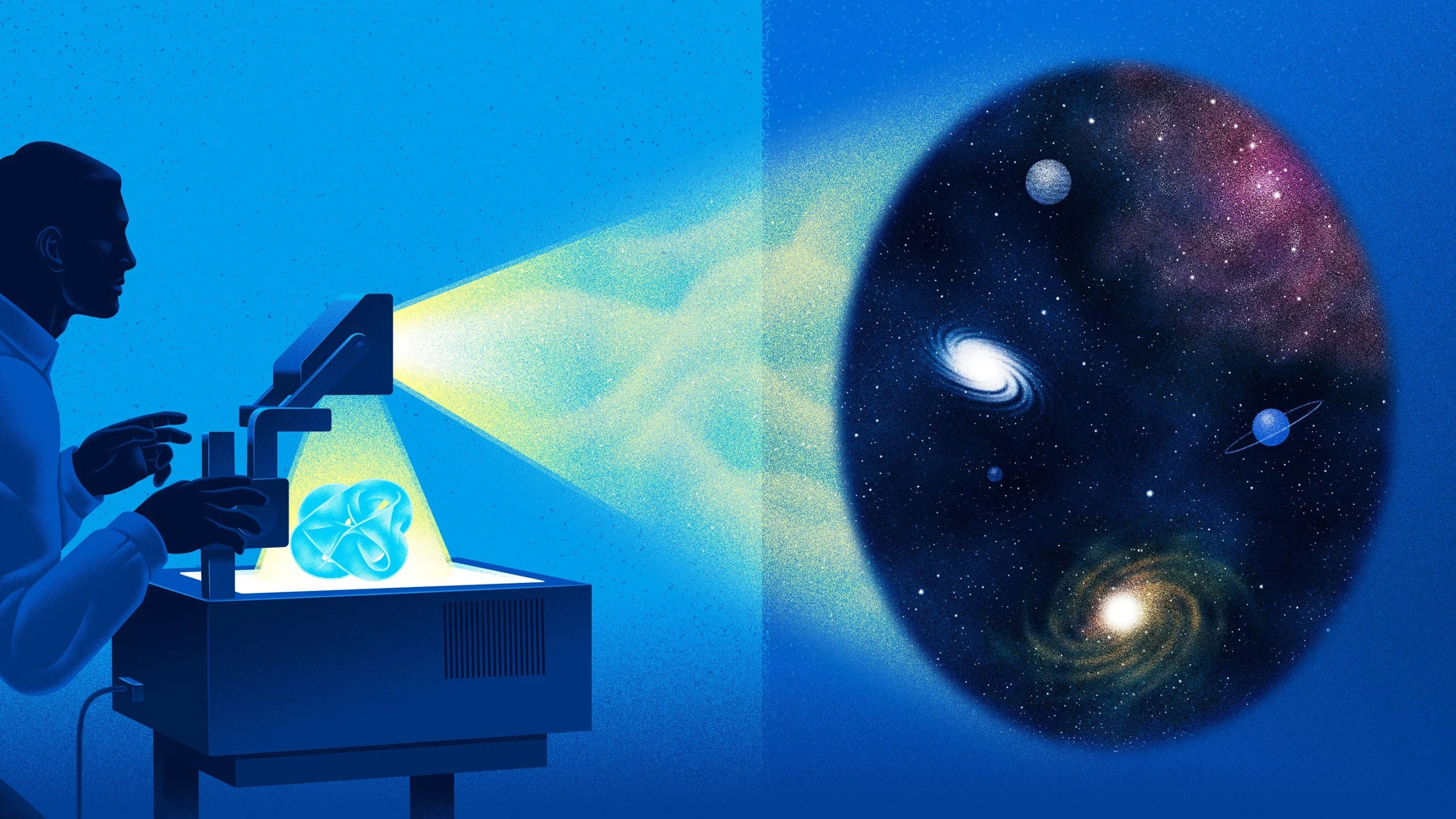Now, a fresh generation of researchers has brought a new tool to bear on the old problem: neural networks, the computer programs powering advances in artificial intelligence. In recent months, two teams of physicists and computer scientists have used neural networks to calculate precisely for the first time what sort of macroscopic world would emerge from a specific microscopic world of strings. This long-sought milestone reinvigorates a quest that largely stalled decades ago: the effort to determine whether string theory can actually describe our world.
“We aren’t at the point of saying these are the rules for our universe,” Anderson said. “But it’s a big step in the right direction.”
The Twisted World of Strings
The crucial feature that determines what macroworld emerges from string theory is the arrangement of the six small spatial dimensions.
The simplest such arrangements are intricate 6D shapes called Calabi-Yau manifolds—the objects that resemble loofahs. Named after the late Eugenio Calabi, the mathematician who conjectured their existence in the 1950s, and Shing-Tung Yau, who in the 1970s set out to prove Calabi wrong but ended up doing the opposite, Calabi-Yau manifolds are 6D spaces with two characteristics that make them attractive to physicists.
First, they can host quantum fields with a symmetry known as supersymmetry, and supersymmetric fields are much simpler to study than more irregular fields. Experiments at the Large Hadron Collider have shown that the macroscopic laws of physics are not supersymmetric. But the nature of the microworld beyond the standard model remains unknown. Most string theorists work under the assumption that the universe at that scale is supersymmetric, with some citing physical motivations for believing so while others do so out of mathematical necessity.
Second, Calabi-Yau manifolds are “Ricci-flat.” According to Albert Einstein’s general theory of relativity, the presence of matter or energy bends spacetime, causing so-called Ricci curvature. Calabi-Yau manifolds lack this kind of curvature, though they can (and do) curve in other ways unrelated to their matter and energy contents. To understand Ricci flatness, consider a doughnut, which is a low-dimensional Calabi-Yau manifold. You can unroll a doughnut and represent it on a flat screen on which moving off the right side teleports you to the left side and likewise with top and bottom.
Six-dimensional shapes called Calabi-Yau manifolds (3D slices of which are shown here) come in increasingly complicated varieties. In string theory, a microscopic manifold lies at every point in our 4D universe and determines the laws of physics we experience.Illustration: Courtesy of O. Knill and E. Slavkovsky
The general game plan for string theory, then, boils down to searching for the specific manifold that would describe the microstructure of spacetime in our universe. One way to search is by picking a plausible 6D doughnut and working out whether it matches the particles we see.
The first step is to work out the right class of 6D doughnuts. Countable features of Calabi-Yau manifolds, such as the number of holes they have, determine the countable features of our world, such as how many distinct matter particles exist. (Our universe has 12.) So researchers start by searching for Calabi-Yau manifolds with the right assortment of countable features to explain the known particles.
Researchers have made steady progress on this step, and over the last couple of years a United Kingdom-based collaboration in particular has refined the art of doughnut selection to a science. Using insight gathered from an assortment of computational techniques in 2019 and 2020, the group identified a handful of formulas that spit out classes of Calabi-Yau manifolds producing what they call “broad brush” versions of the standard model containing the right number of matter particles. These theories tend to produce long-distance forces we don’t see. Still, with these tools, the UK physicists have mostly automated what were once daunting calculations.





